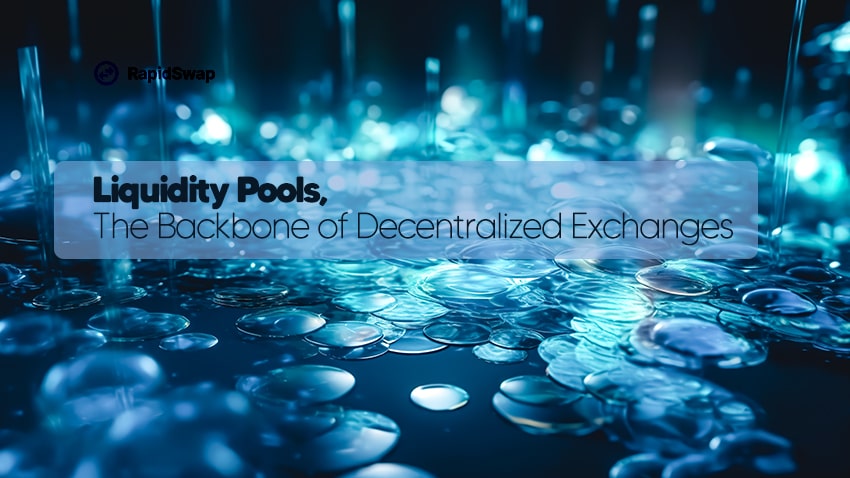In the rapidly evolving world of cryptocurrency, the concept of liquidity is pivotal. Liquidity determines how quickly and easily assets can be traded without causing significant price fluctuations. As decentralized finance (DeFi) continues to grow, liquidity pools have emerged as a crucial innovation, reshaping how crypto assets are exchanged on decentralized platforms. This article delves into the intricacies of liquidity pools, explaining their function, significance, and the role they play in the broader crypto ecosystem.
What Are Liquidity Pools?
Liquidity pools are essentially pools of tokens locked in a smart contract that provide liquidity for decentralized exchanges (DEXs). These pools are the backbone of automated market makers (AMMs), a type of protocol that powers most DEXs today. Instead of relying on traditional order books to match buyers and sellers, liquidity pools allow trades to occur directly against the liquidity in the pool. This system ensures that there is always liquidity available for traders, enabling smooth and efficient transactions without the need for a centralized intermediary.
How Liquidity Pools Work
At the core of a liquidity pool are two or more tokens that are paired together. For example, a common pair might be ETH/USDT, where liquidity providers (LPs) deposit equal values of both Ethereum (ETH) and Tether (USDT) into the pool. When a trader wants to swap one token for another, the AMM uses a mathematical formula (often a constant product formula, like x * y = k) to determine the exchange rate and execute the trade.
As trades occur, the prices of the tokens in the pool adjust based on the ratio of tokens in the pool. If more ETH is being bought, for example, the price of ETH will rise relative to USDT. This dynamic pricing mechanism is what enables DEXs to operate without the need for a traditional order book.
The Role of Liquidity Providers
Liquidity providers (LPs) are essential participants in the liquidity pool ecosystem. They contribute their tokens to the pool, and in return, they earn a share of the transaction fees generated by trades that occur within the pool. This fee is usually a small percentage of the trade amount, and it is distributed proportionally to all LPs based on their contribution to the pool.
However, participating as an LP is not without risks. One of the primary risks is impermanent loss, which occurs when the price of the tokens in the pool diverges significantly from their price at the time they were deposited. If an LP withdraws their tokens after such a price movement, they may end up with a lower value than if they had simply held onto their tokens outside of the pool.
Why Liquidity Pools Are Important
Liquidity pools have revolutionized the way decentralized exchanges function. By providing a reliable and efficient means of trading, they have eliminated many of the limitations associated with traditional order book exchanges. Here are some key reasons why liquidity pools are important:
- Continuous Liquidity: Liquidity pools ensure that there is always liquidity available for trading, regardless of the time of day or the size of the transaction. This is particularly important in the 24/7 crypto market, where trading occurs around the clock.
- Decentralization: Liquidity pools operate on decentralized platforms, removing the need for a central authority to manage trades. This aligns with the broader principles of DeFi, which emphasize transparency, security, and user control.
- Accessibility: Liquidity pools lower the barriers to entry for trading, allowing anyone to participate as a liquidity provider and earn rewards. This democratizes access to trading and opens up new opportunities for passive income in the crypto space.
- Innovation: The use of liquidity pools has spurred a wave of innovation in DeFi, leading to the development of new financial products and services, such as yield farming, staking, and lending protocols.
Risks and Considerations
While liquidity pools offer many benefits, they are not without risks. As mentioned earlier, impermanent loss is a significant risk that LPs need to be aware of. Additionally, since liquidity pools are based on smart contracts, they are susceptible to vulnerabilities and exploits. It is crucial for participants to conduct thorough research and choose reputable platforms with strong security measures in place.
Moreover, the DeFi space is still relatively young, and the regulatory environment is evolving. Participants should be mindful of the potential for regulatory changes that could impact the operation of liquidity pools and the broader DeFi ecosystem.
Liquidity pools are a cornerstone of the decentralized finance landscape, enabling efficient and seamless trading on decentralized exchanges. By understanding how they work and the role they play, traders and investors can better navigate the complexities of the DeFi space. While there are risks involved, the potential rewards and innovations that liquidity pools bring to the table make them an essential component of the modern financial system. As the crypto market continues to mature, liquidity pools will undoubtedly play an increasingly important role in shaping the future of finance.

